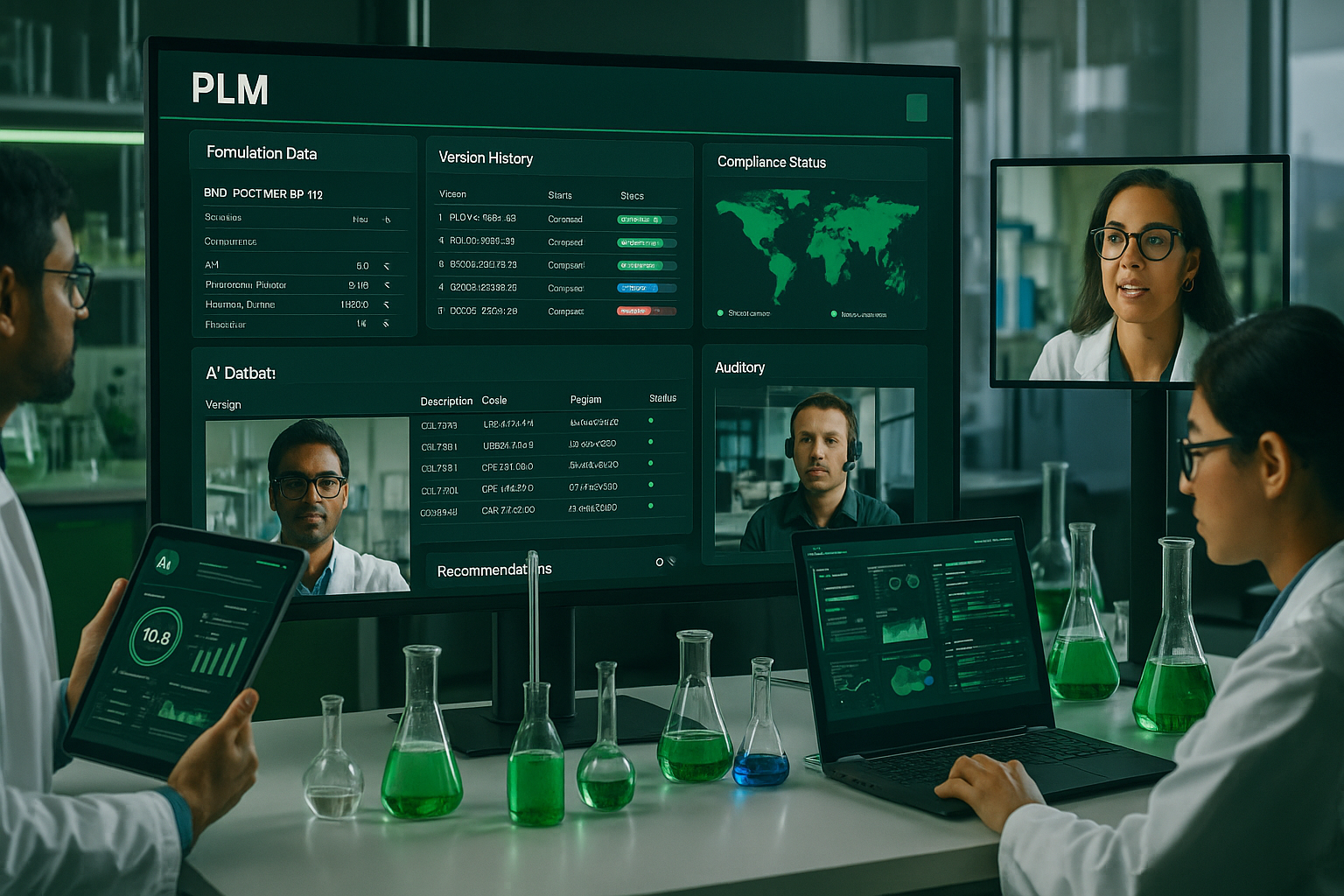Borderless Collaboration: The Role of PLM in Integrating Teams in Chemical Product Development
Why PLM Is Critical for Global Chemical R&D
In the fast-evolving chemical industry, product development no longer happens in isolated labs or within the walls of a single department. From global R&D centers to local regulatory units, and from raw material suppliers to downstream partners, successful chemical innovation now depends on cross-functional, cross-border collaboration.
This complexity makes it increasingly difficult to manage formulations, versioning, documentation, and compliance across teams—unless the organization adopts a robust Product Lifecycle Management (PLM) system.
PLM serves as the digital backbone of chemical innovation. It enables organizations to consolidate data, standardize development processes, and facilitate real-time collaboration across regions, departments, and disciplines. Unlike spreadsheets or disconnected databases, a modern PLM platform allows stakeholders to work on a single version of the truth, ensuring traceability, compliance, and innovation continuity throughout the entire lifecycle of a product—from idea to market.
A small change in a formulation can impact safety classifications, REACH compliance, GHS labeling, shelf life, sustainability metrics, and plant performance. Without centralized control, managing these changes across global teams can lead to regulatory noncompliance, costly recalls, or missed market opportunities. PLM eliminates these risks by bringing transparency, control, and structured workflows.
For companies still working in silos or using legacy tools, the article Is Your Chemical Product Development Ready for PLM? offers a useful guide to understanding the signals that indicate it’s time to transition toward structured product lifecycle management.
AI + PLM: From Documentation to Intelligent Decision-Making
Modern PLM platforms become even more powerful when integrated with artificial intelligence. Platforms like Chemcopilot bring AI-powered simulation, cost analysis, carbon tracking, and regulatory impact assessments directly into the PLM workflow.
Let’s consider a real-world use case: a reformulation is made to meet new biodegradability goals. AI can instantly calculate how that change impacts CO₂ emissions, toxicity, and regional compliance, and suggest lower-impact ingredient substitutes. Then, PLM makes those updates visible to all stakeholders—from the regulatory team in Europe to the procurement team in Asia.
This synergy is further explored in PLM, AI, and ERP Integration, where the fusion of operational systems enables data-driven formulation development and continuous improvement.
PLM captures the AI-driven changes, ensures approval workflows are followed, and logs version histories. It becomes more than a record-keeping system—it becomes a collaborative innovation hub supported by real-time intelligence.
Collaboration, Compliance, and Sustainability at Scale
One of the greatest strengths of PLM in the chemical industry is how it supports borderless collaboration while maintaining regulatory integrity. Version control, digital approvals, audit trails, and role-based access allow distributed teams to co-create products without chaos.
As discussed in Why PLM Is Becoming Essential for Regulatory Compliance, chemical companies must comply with an ever-growing matrix of global regulations. PLM provides the infrastructure to stay ahead—automating documentation, maintaining full traceability, and flagging compliance issues early.
Furthermore, PLM is a key enabler of green chemistry and sustainable innovation. It ensures that every new product version is evaluated not only for technical and commercial performance but also for environmental impact—especially when combined with Chemcopilot’s carbon tracking and lifecycle analysis features.
To build an even more connected ecosystem, many companies are now integrating PLM with LIMS and AI systems, as detailed in Building a Digital R&D Ecosystem. These integrations accelerate product development while ensuring safety, compliance, and sustainability from lab to launch.

